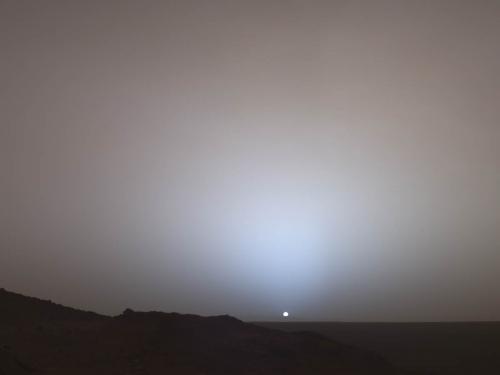4 Images
The Mars Pathfinder (MPF) spacecraft consisted of a stationary lander and a separate rover called Sojourner. The rover rested on one of the three MPF solar panels that were folded over the spacecraft during launch and interplanetary cruise. MPF entered the martian atmosphere directly on July 4, 1997 traveling at nearly 7,300 m/s. The entry vehicle's heat shield slowed the spacecraft to 400 m/s in about 160 seconds before deployment of the parachute and airbags. The MPF landing site was near the mouth of Ares Valles, a large outwash plain from one of the largest outflow channel complexes on Mars at 19.33° N, 33.55° W.
After landing, two ramps were unfurled from the solar panel where the rover was mounted. The rover was then deployed down one of these ramps where it proceeded to take close-up images of the surface using two color cameras on the front and a black and white camera on the rear. The rover also contained a rear-mounted Alpha Proto X-ray Spectrometer that provided bulk elemental composition data on surface soils and rocks. In addition, the stubby wheels of the rover provided information about the physical characteristics of the surface soil and rocks. Images were taken and experiments performed by the lander and rover until September 27, 1997, when communications were lost with the lander. However, because communications with the rover were relayed through the lander, the communications lost brought an end of the mission for the rover as well.
This spacecraft is a full-scale model that was built by the Jet Propulsion Laboratory for the National Air and Space Museum. The rocker-bogie, wheels and frame are constructed of aluminium and are similar to the actual flight vehicle. However, the scientific navigation, and communication instruments are made of resin and do not possess all of the detail of the originals. This model was displayed in the "Where Next, Columbus" gallery from 1992 to 2002.
Display Status
This object is on display in Space Science at the Steven F. Udvar-Hazy Center in Chantilly, VA.
Video
Object Details
Country of Origin
United States of America
Type
MODELS-Miscellaneous
Manufactured for
NASA - Jet Propulsion Laboratory
Dimensions
Overall: 1 ft. 11 in. long x 1 ft. 5 in. wide x 2 ft. 8 in. tall, 60 lb. (58.42 x 43.2 x 81.3cm, 27.2kg)
Materials
Plastic, metals, composites, rubber.
Alternate Name
Mars Sojourner Rover Model
Inventory Number
A20020297000
Credit Line
Transferred from Jet Propulsion Laboratory, CIT
Data Source
National Air and Space Museum
Restrictions & Rights
Usage conditions apply
For more information, visit the Smithsonians Terms of Use.



